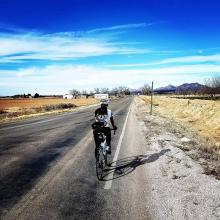Riding the Wave: Responding to Shifting Student Needs (and Institutional Realities) During the Pandemic
Concurrent Session 4


Brief Abstract
We will share student survey results during the pandemic, and how we responded. Our University is a HSI, and also serves students from tribal communities facing health disparities. This presentation details instructional modifications and student supports, and follow-up survey results. Participants will gain ideas to support students during difficult times.
Presenters


Extended Abstract
During the COVID-19 pandemic, students struggled under the emotional weight, economic hardship, and logistical chaos of the evolving crisis. Students needed more from their degree programs than just adequate online classes—the uncertainty and isolation associated with COVID-19 called for increased attention to student and community well-being, as well as modification to regular teaching practices.
In late Fall 2020, we surveyed our students about their experiences and what they needed from their program. We asked students to share their thoughts about internet access, synchronous class sessions, LMS utilization, peer interaction, and student/instructor communication. Our student body is wonderfully diverse and presents a range of unique challenges—our University is a HSI (Hispanic-serving Institution), and we also serve a large number of students from tribal communities, students who may lack citizenship documentation, and those who are first-generation college students. Additionally, our largely rural state lacks widespread access to broadband internet; the digital divide here runs deep. COVID-19 death rates in tribal communities were significantly elevated, reflecting a serious health disparity. As a result, many of the challenges experienced throughout the country during the pandemic were amplified for our students.
After sorting through our survey responses, several themes emerged: students were struggling with lack of reliable access to the internet and the costs associated with increased data usage, and were frustrated with certain features of the LMS and Zoom course delivery. Students noted that instructors’ ease with technology was not uniform. As a program with a large number of adjunct faculty, we needed to improve instructor consistency related to online teaching skills. Our students also identified that they were feeling the strain of isolation and were craving peer interaction. Students expressed how difficult it was to maintain motivation during this uncertain time, and to balance home, school and work expectations after their daily routines had been turned upside down by COVID-19. After reviewing these concerns, we conceptualized a list of teaching and learning modifications, as well as additional student supports to address the increased mental health challenges.
In this presentation, we will share what we learned from that initial student survey and the details of the interventions we decided to try. We will share how we aimed to improve teaching, find new ways to create community, and address students' emotional and academic needs. We will discuss specific Ideas that were subsequently implemented related to teaching; one of these was assigning all adjunct faculty an online mentor to offer training and assistance. Instructors were given specific recommendations for LMS usage, as well as asynchronous training modules to help troubleshoot common issues. To address the growing reality of ‘Zoom fatigue,’ the program made a School-wide decision to reduce synchronous class duration and shift to a more ‘flipped’ classroom model. Simplification and consolidation of assignments was initiated by our Lead Instructors for all courses, and all faculty were encouraged to send weekly announcements to remind students of approaching due dates.
In a response to the isolation, mental health issues and other hardships that students were experiencing, we mobilized a number of resources to enhance wellness and increase a sense of connection within our learning community. We increased use of breakout rooms during Zoom sessions, and provided ongoing social opportunities, including virtual student hangouts and social justice topic discussions (open to all) which allowed students to process current issues around racism, health disparities and immigrant experiences that were impacting the communities we serve.
To promote student self-care activities, our School implemented weekly ‘mindfulness breaks’ and passed along resource information including available telehealth counseling and other support services. Funds that would usually go toward sports and recreation activities were shifted to virtual events like an art contest/exhibit and fitness classes. A few tangible resources were also offered to students, including a ream of paper and an office supply gift card. For students experiencing a financial crisis due to lost wages or illness, referrals were made to the University emergency hardship funds.
Not all of these ideas were successful; some were quickly tossed out or significantly adapted. And like all institutions, our University has an administrative bureaucracy that does not always lend itself to rapid, agile changes. We look forward to sharing what we learned from our process of needs assessment, planning, implementation, and evaluation. We will explain how the follow-up student survey results are now informing our work going forward. Participants in this session will engage in a brief mindfulness activity, as an example of one activity that we utilized during this period to support student well-being. Participants will also engage in a group brainstorming activity related to institutional barriers and leave this session with easy-to-implement ideas for their own programs during future times of uncertainty/transition.

